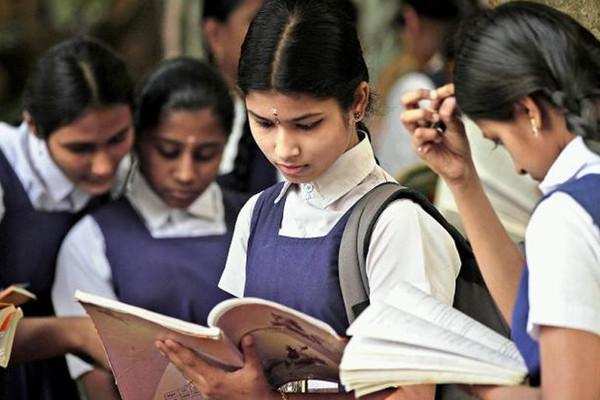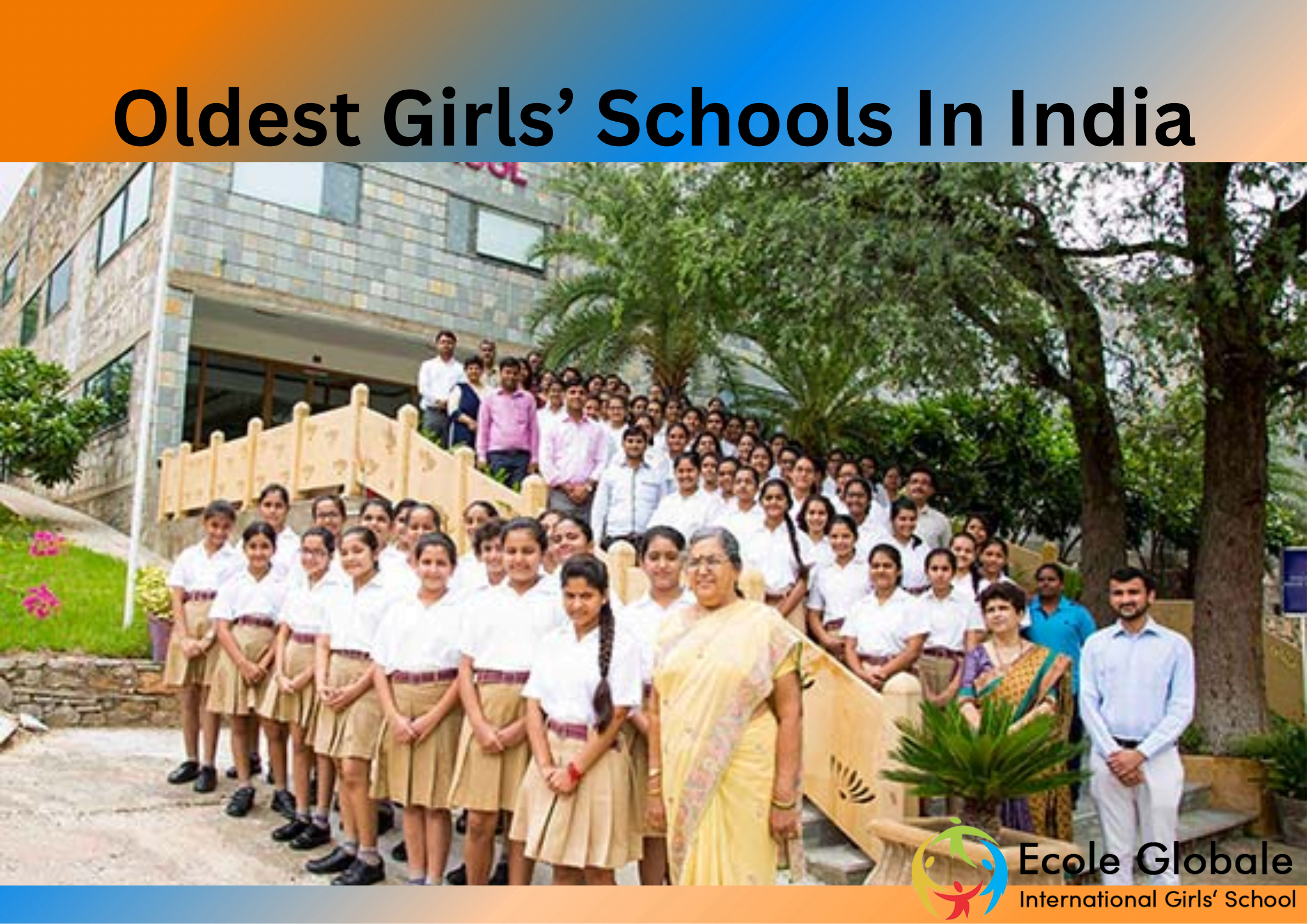Till a decade ago, it was considered prestigious for a girl child to be married off at a tender age. Marriage not only hindered her studies but also robbed her of her freedom of choice. But in the past few years, there has been a paradigm shift in the attitude of parents towards girls’ education.
As per research conducted by International schools in India, Elementary education has always been a challenge for girls, who, in many parts of the world, have either never had the chance to learn or have been forced out of school by poverty or cultural barriers. That is why it’s not just crucial to create more schools for girls and women, but also to ensure that schools are safe places where girls can learn and reach their full potential.
Also Read : Which Are The Top 10 Schools For Girls In India?
Importance Of Girls’ Education

Girls’ education is not just about girls; it’s about families, communities, nations and the world as a whole. It’s about ensuring that girls have access to a quality education because they deserve every opportunity.
It opens up opportunities for them to become leaders in their communities, countries and the world at large. It gives them the confidence to take on any challenge thrown at them by life itself.
Girls’ education is one of the most influential things in the world. It helps girls to be independent and self-sufficient, allows them to support themselves and their families, and gives them the skills they need to make a difference in the world.
The former has been shown to improve health outcomes for both mothers and children, as well as increase access to food, clean water, sanitation facilities and other services.
Including girls in education also helps break down gender stereotypes that can lead to violence against women and girls.
Indian Women’s Education Under The British Rule
The education of women in colonial India is a complicated issue. On the one hand, women were largely denied access to education, particularly in rural areas; on the other hand, some educated women could use their literacy skills to effect change for themselves and others.
Women’s education in colonial India was limited by more than just the restricted availability of schools for girls. Many parents believed that it was better for their daughters to stay home and learn domestic skills rather than go out into the world; as a result, most girls did not attend school at all. Girls were treated as second-class citizens and were given a very limited role in society. However, some did have access to education through their families’ wealth or missionary schools set up by Europeans.
In addition to this, there were certain “evil practices” which severely limited women’s opportunities for education: sati (a Hindu custom where widows would immolate themselves after their husbands died) and child marriage (when a girl was married off before she reached puberty). These barbaric practices made it difficult for women who wanted an education but had obligations at home or were forced into early marriages by their parents due to poverty or caste status.
According to the Charter Act of 1813, Christian missionaries were the first to be permitted to run schools for both men and women. In Bengal’s Chinsurah district, a school only for girls was initially established in 1818 by Robert May of the London Missionary Society.
India in the 1820s was a very different place from now. It was a widely held idea among Indians, regardless of their religious or geographic affiliation, that educating girls would diminish their femininity and disgrace the family because women should be kept in the home.
Jyotirao And Savitribai Phule: Founders Of The First Girls’ School
Bhidewada
The efforts made by reformers like Jyotirao and Savitribai Phule must be commended. Savitribai, who is recognised as India’s first female teacher, was nine years old and illiterate when she wed Jyotirao. She was taught to read and write by Jyotirao personally, after which he sent her to Cynthia Farrar’s school in Ahmednagar for more instruction.
In August 1848, the Phule’s established the first girls’ school in Pune, within Tatyasaheb Bhide’s home. At this school, Savitribai and Fatima Sheikh both worked as teachers.
The Phules’ school was based on the idea that men and women are equal—a revolutionary concept for the time. The students were taught not just academics but also crafts, such as sewing and cooking.
Despite having nine girls from different social backgrounds, including Dalit and Muslim families in Pune, the school’s opening raised quite a stir. After all, the mindset of the time was adamantly opposed to women’s education, particularly when it was being given by Dalit teachers.
However, the Phule’s persisted in their efforts since their goal was to aid Dalits, women, and members of other marginalised populations in obtaining independence via education. To provide females who had to work during the day with access to education, they created 18 more girls’ schools in and around Pune between 1848 and 1852. By 1855, they had even opened night schools.
The Educational Renaissance

Bengal was undergoing a renaissance in the 1830s and 1840s that would make such schools famous throughout Bengal, while the Phule’s were establishing and popularising their girls’ schools in Pune. To advance women’s right to education, movement leaders including Ishwar Chandra Vidyasagar, Dakshina Ranjan Mukherjee, Ramgopal Ghosh, and Madan Mohan Tarkalankar all opposed the patriarchal beliefs held by Hindu culture at the time.
John Elliot Drinkwater Bethune, a lawyer with a Cambridge education was assigned to the Governor-Council General’s in Calcutta at the time. The Hindu Female School of Calcutta was established in 1849 in Mukherjee’s residence in Baitakkhana with the assistance of Bethune and the four Indian reformers mentioned before (now known as Bowbazar).
Later, a true school was erected on land Mukherjee gave in Mirzapur, and it was given the new name Bethune School. On May 7th, 1849, the institution opened its doors to 21 girls. After Bethune died in 1851, the school was moved to a new, larger facility in Cornwallis Square in Calcutta. Bethune had bequeathed all of his moveable and immovable property to the school.
Names Of The Oldest And Most Reputed All-Girls’ Schools
1. La Martiniere For Girls School
Their goal is to give driven young women a holistic education that will help them develop into compassionate, self-assured leaders who are driven to make a difference in the world.
Phone: 7570000131, 7570000132
Email: lmgclko@gmail.com,
Address: La Martiniere Girls’ College, 1-Rana Pratap Marg-226001
Founding Year: 1869
2. Bishop Cotton Girls School
The institution has recently upgraded its physical plant by building new structures with roomy, well-ventilated classrooms, cutting-edge laboratories and research facilities, a multimedia centre with networked computers and educational software, an indoor pool, and a library with plenty of reading space.
Phone: +91 80 2221 0268 / 2221 3083
Email: bcgs@bishopcottongirls.com
Address: #1, St. Mark’s Road, Bangalore – 560001
Founding Year: 1865
3. Rama Krishna Sarada Mission Sister Nivedita Girls School
The school has six other buildings of its own that house the Secondary Section, the Primary Section, and the Industrial Section in addition to the old, lovely, and spacious structure with 35 rooms and a prayer hall.
Phone: +91-033-25552109
Email: sisternivedita1898@gmail.com
Address: 5, Nivedita Ln, Sovabazar, Baghbazar, Kolkata, West Bengal 700003
Founding Year: 1898
4. Scindia Kanya Vidyalaya Girls School
The Central Board of Secondary Education New Delhi is connected with the school. English is used as the instruction language. For classes VI through X, the school uses a method called CCE, or Continuous Comprehensive Evaluation, in which students’ performance is evaluated based on formative and summative tests throughout the academic year.
Phone: +91-751-2322137
Email: admissions@skvgwalior.org
Address: Scindia Kanya Vidyalaya, Moti Mahal Road, Gwalior – 474007
Founding Year: 1956
5. Mayo College Girls School
They go out of their way to ensure that the Girls’ School’s ethos is infused with Indian traditions and culture while also taking the difficulties of the present and the future into consideration. The Mayo College Girls’ School will place a strong emphasis on Indian values, dance, and theatre in the lives of its students.
The institution, now referred to as the “Sister School” of Mayo College, works to realise the founders’ original aim.
Phone: 0145 2636007 (Admissions)
Email: office@mcgs.ac.in, admissions@mcgs.ac.in
Address: Mayo Link Road, Ajmer, Rajasthan
Founding Year: Mayo College Girls’ School, Mayo Link Road, Ajmer, Rajasthan, Pin Code – 305007
6. Vidya Devi Jindal School
The school, located 150 kilometres from New Delhi in a lush and unspoiled environment of 47 acres, is a genuine wonderland of winding roads, trees, flowers, and exotic birds. It benefits from the serenity and seclusion of the past while having modern connections.
We bridge the quiet by entering a vibrant road of success with our sorority. 24X7 customised care by resident staff delivers a smorgasbord of academic brilliance, numerous co-curricular activities, and top-of sporting facilities.
Phone: 098964-19611
Email: info@vdjs.edu.in
Address: Delhi Road, Hisar, Haryana Pin – 125044
Founding Year: 1984
7. Ashok Hall Girls Residential School
Amidst the picturesque Kumaon Hills in the lovely town of Majkhali, Uttarakhand, the Ashok Hall Girls’ Residential School was founded in 1993. The school, a project of the B.K. Birla Group of Companies is known for its dedication to quality.
Phone: +91 – 96390-06461
Email: office.ahgrs@ashokhall.net
Address: Majkhali-263 652, Almora,
Uttarakhand, India
Founding Year: 1993
Conclusion
The education of a woman is essential in modern India. When women get an education, their lives change dramatically for the better. They can escape from the cycle of poverty and start to make it on their own, which helps contribute to a stable country that won’t have as many poor people. An educated population is always better than an uneducated one; there are no exceptions to this rule.
For any queries related to parenting, schooling, or any student-related tips, click here to check out our latest blogs









